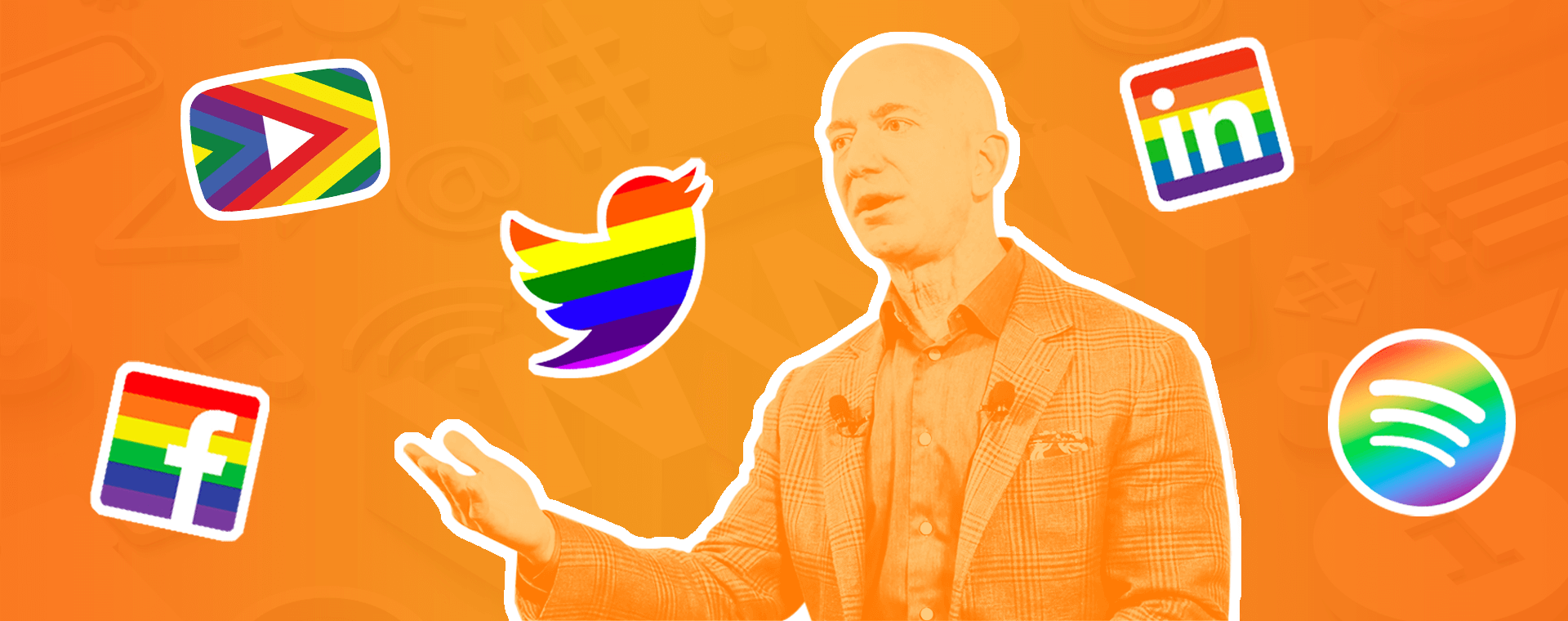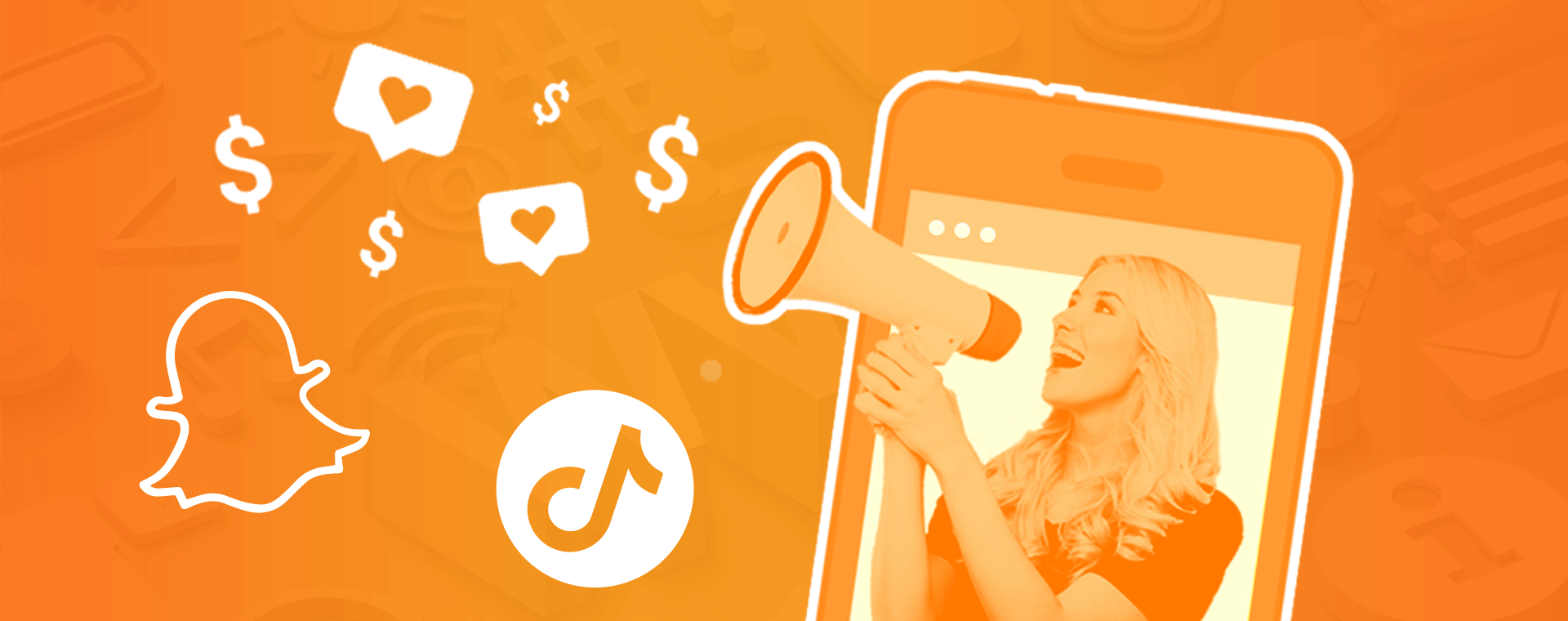Duolingo perfected the multichannel marketing campaign (and the whole thing was fake)
By: Ria Moody
June 13, 2024 | Reading Time: 7 mins
Every social media marketer dreams of breaking the internet with that perfect viral post. However, the reality is that one perfect post doesn’t cut it anymore (and also chasing virality may not be the best plan). With more social media platforms than ever before, each carving out its niche, marketers can no longer rely on a “one size fits all” approach. This is where multi-channel marketing comes in.
What is multichannel marketing?
As the name implies, multichannel marketing combines multiple marketing channels and platforms into a single, cohesive strategy. The goal is to create engaging content that is uniquely tailored to each platform, reaching customers in an impactful way. Multi-channel marketing aims to eliminate the “one size fits all” mentality, ensuring that content is optimized and personalized for each platform.
Multichannel vs. omnichannel
While these two terms are incredibly similar, there are subtle differences in how they operate and how you plan your marketing strategy. At its core, multichannel marketing is product-focused. The goal is to incorporate multiple channels and platforms into your marketing strategy, creating unique content for each.
By contrast, omnichannel marketing keeps the customer journey at the center of its planning. This approach focuses on a very specific target market and works to craft a customer experience that blends seamlessly across multiple channels. For example, if you click on an Instagram ad for a pair of shoes, you might receive a sale notification in your Gmail inbox a few hours later.
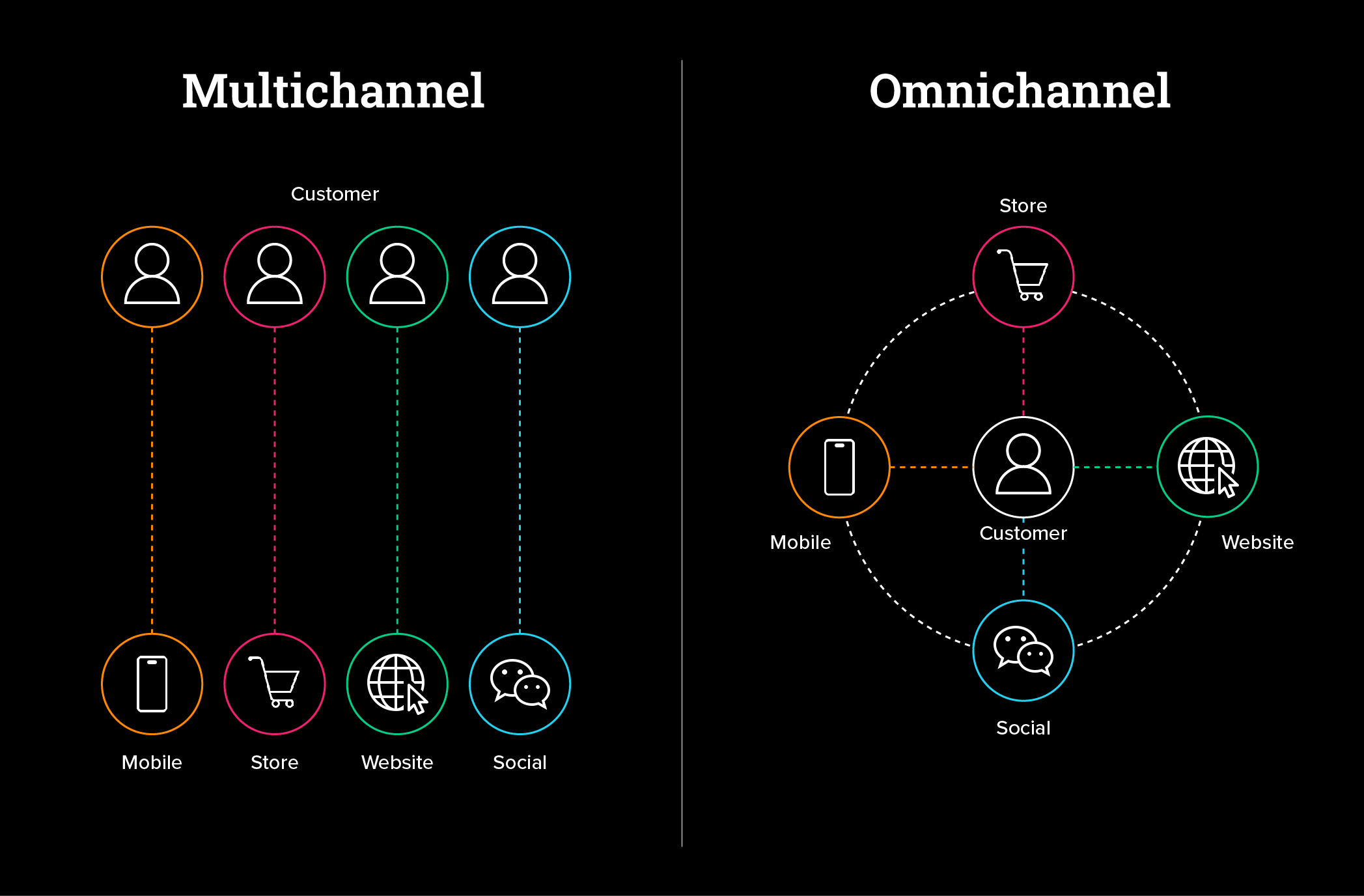
Never be boring—the golden rule of multichannel
If you’re copying and pasting identical content across multiple platforms, you’re overlooking valuable opportunities for customer engagement. The average social media user switches between 6-7 different platforms. Your followers are looking for unique experiences tailored to each platform. They’re unlikely to engage with your TikTok content if they’ve already seen the same thing on Instagram. Ultimately, social media users crave entertainment, and your content should deliver precisely that. This doesn’t mean re-inventing the wheel on every platform but understanding how to position and repurpose content for each platform.
Different platforms cater to distinct customer segments. When planning your campaigns, it’s important to analyze your target audience and determine the platforms where they are most active and receptive to your message.
A masterclass in multichannel success: Duolingo’s viral April Fools Day prank
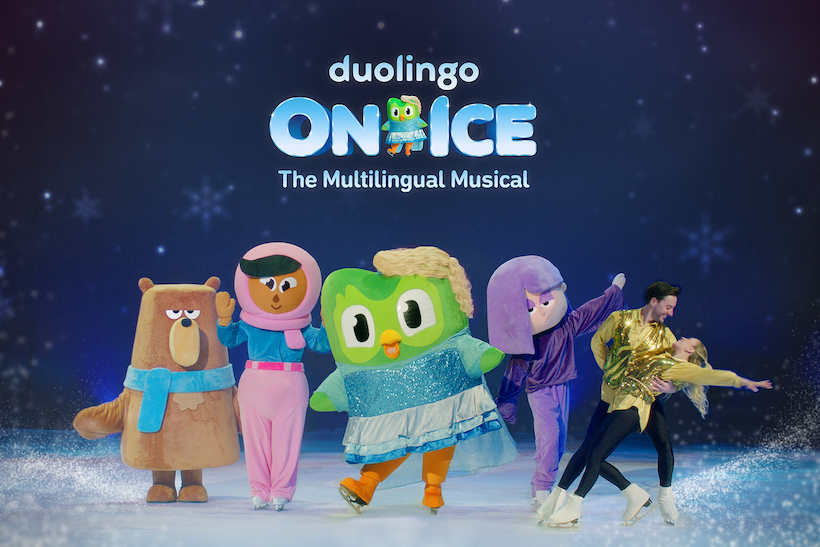
In 2016, Duolingo began a tradition of pranking their followers on April 1, and 2024’s ruse might have been the most elaborate yet. Duolingo went to extreme lengths to create an over-the-top video campaign advertising a non-existent live show called “Duolingo on Ice,” a parody of the ever-popular “Disney on Ice.” This included hiring professional dancers and skaters to perform in the video, a two-time Emmy Award-winner to produce the show itself, and put their beloved and unhinged brand mascot, Duo the Owl, front and center.
Right from the start, Duolingo leveraged the power of video content for their social media strategy. Video content consistently outperforms other types, such as images and text posts, making it the perfect format to centralize this multi channel marketing campaign around. The result was a viral campaign that broke the internet, leaving followers truly disappointed to learn the whole thing was a joke.
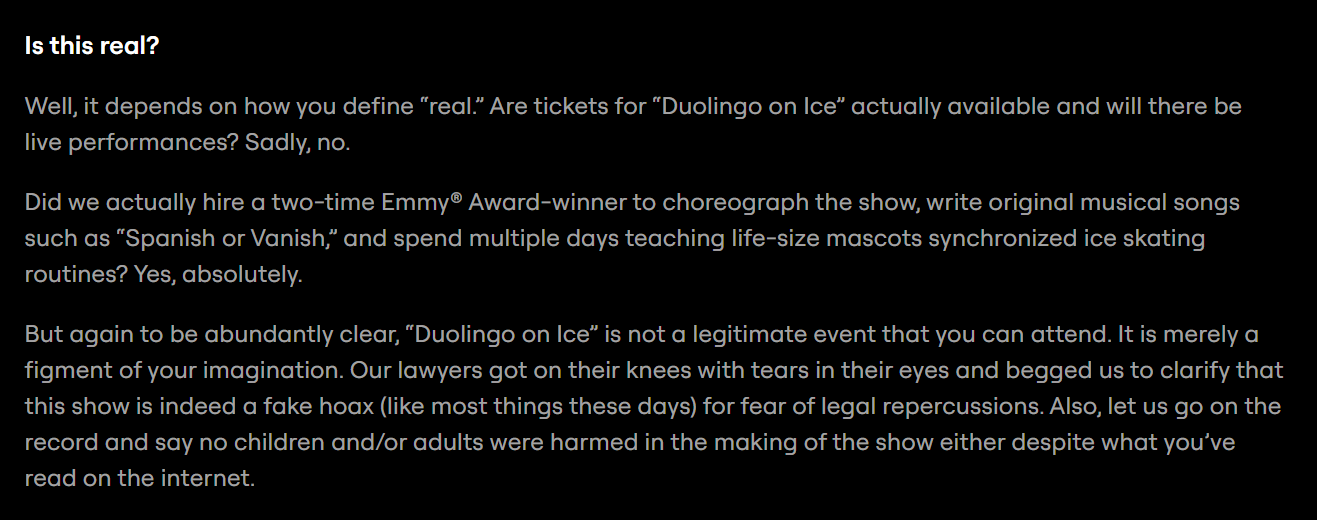
Breaking down the campaign’s multichannel approach
SeatGeek
The reason this campaign went viral was its believability. It was so outrageous it just might have been true. What made this prank so believable was that it was linked back to a webpage on SeatGeek with event details and show dates at real venues.
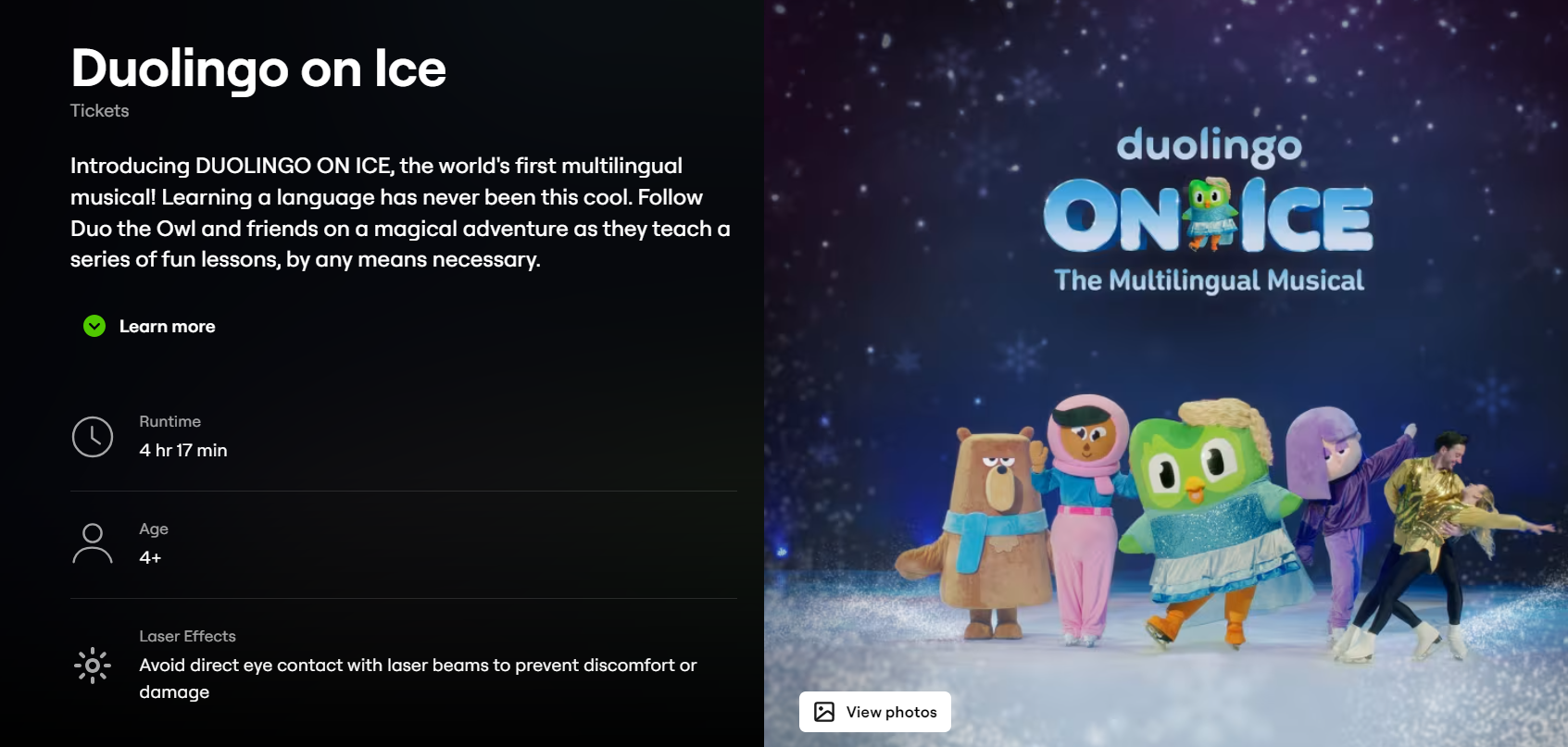
As you explore the event details by scrolling down the page, you’ll find plenty of the sharp and slightly dark humour that the Duolingo brand has become known for. The brand voice is maintained throughout the entire page.

YouTube
YouTube has long dominated the world of video content, making it a no-brainer for Duolingo to share its campaign on this platform. By uploading their full-length video, they tapped into the platform’s preference for longer content while ensuring continued engagement. The video’s caption is concise, and designed not to overshadow the main content. By keeping the video under 3 minutes they were able to capture the attention of their audience quickly and hold their interest for the duration of the video.

TikTok/Instagram Reels
Short-form video has emerged as a dominant force in content creation for younger demographics, offering easily consumable content that keeps audiences engaged. TikTok was the original short-form video app and experienced a surge of popularity in 2020, prompting other social media platforms to integrate short-form video features. Instagram responded with Reels, incorporating the trend into its platform.
While some brands opt for distinct content strategies across platforms, Duolingo takes a unified approach by sharing the same video content on both TikTok and Instagram, with minor alterations to the hashtags in captions. This is likely because Duolingo understands its customer behaviour and does not have much audience cross-over between the two platforms. Between the two channels, Duolingo got a whopping 2.2 million likes on the video!
@duolingo WE WERE BORN TO MAKE HISTORY🗣️🗣️ #fyp #duolingo #DuolingoOnIce #YuriOnIce #historymaker
♬ original sound – 𝓶𝓪𝓻𝓼 – mars
Duolingo also engaged with its community of followers on the two apps by replying to comments with the tone and unhinged humour its brand has become known for. Not only does this drive engagement to their posts but it also creates a sense of community among users while maintaining brand consistency.
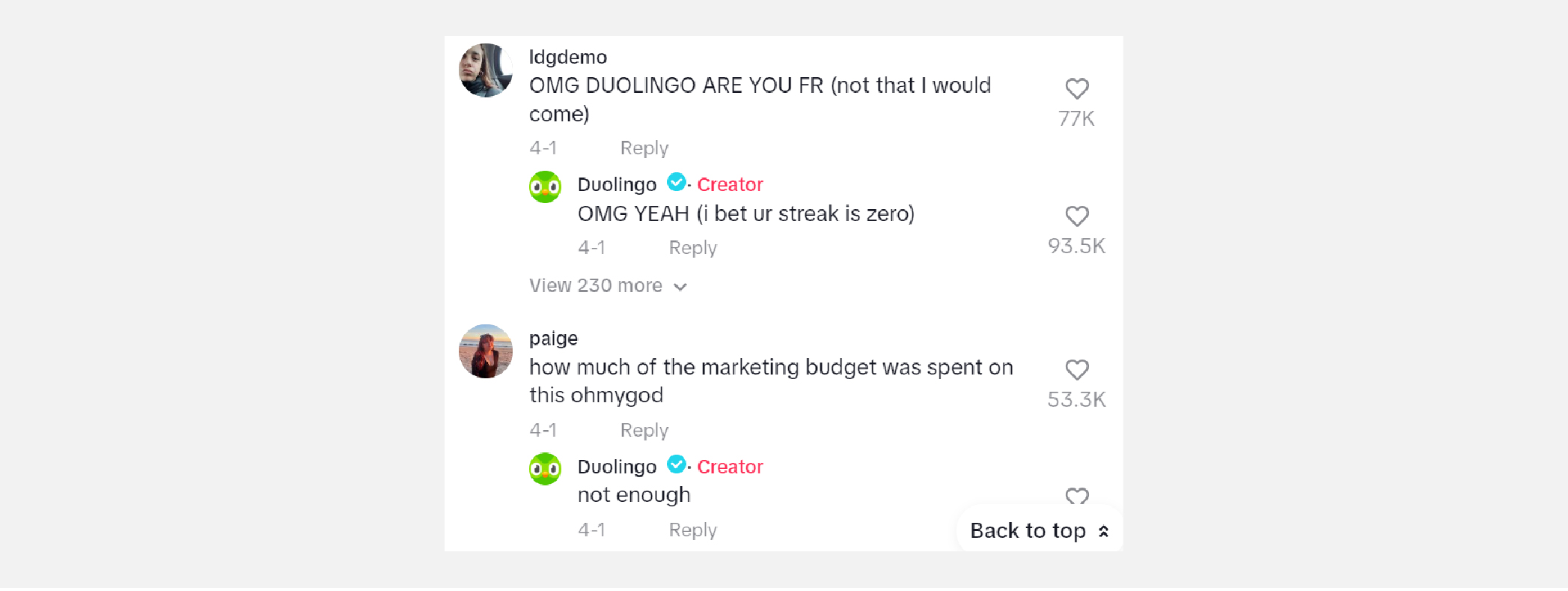
X (Twitter)
When it comes to social media platform X, follower interaction is just as important as the post itself, if not more so, and Duolingo could teach a master class in it. X users want brands to post as if they’re real people. By replying to users and having actual conversations, Duolingo drives post engagement. By keeping the brand’s humour at the forefront of all their interactions, they encourage more users to join in on the fun and see what type of cheeky reply their favourite owl might leave them. This strategy certainly paid off for Duolingo, with their original post garnering over 2.9 million views!
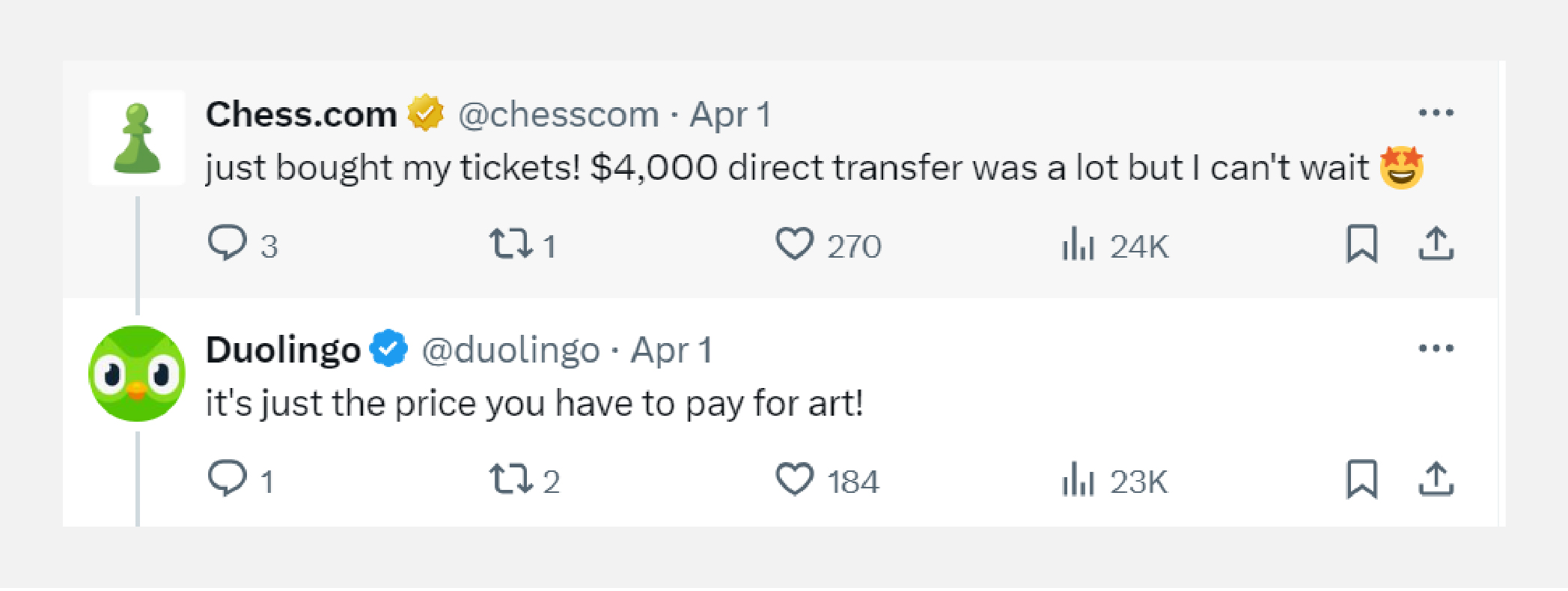
Millennials make up 69% of Facebook users (compared to only 37% of Gen Z). If the internet has taught us anything over the last few years, it’s that Millennials and Gen Z have very different types of humour and do not relate to content in the same way. Duolingo understood the assignment when modifying this post for Facebook and swapped out the dark, niche humour that was in their Instagram and TikTok posts, for something a bit more tame to appeal to their Millennial Facebook audience.
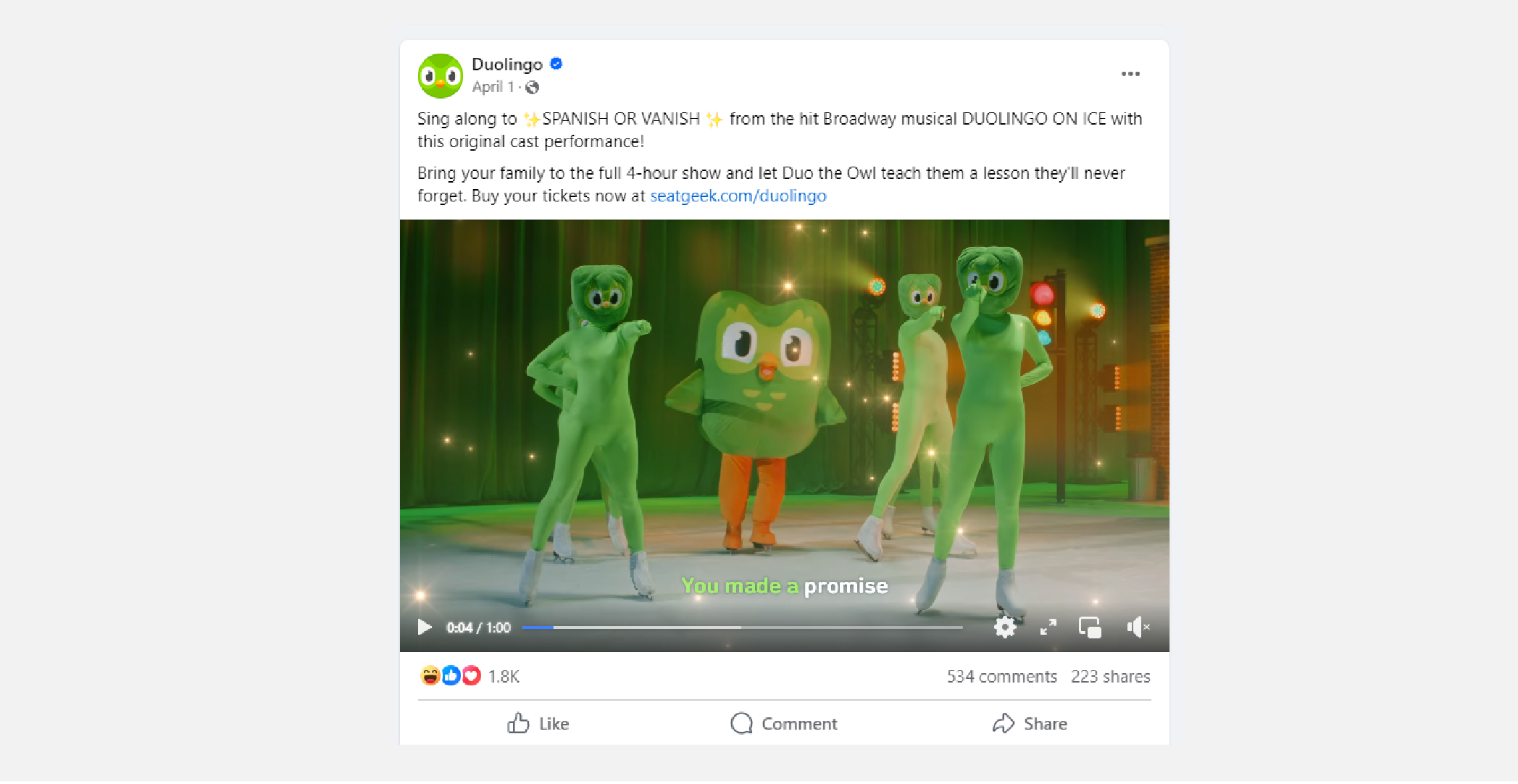
Key takeaways
Know your goals
What are you hoping to get out of this multichannel campaign? Who is your target audience? What kind of brand voice are you hoping to convey? These are important things to establish from the start to ensure that your posts maintain brand consistency and are effective across various channels.
Understand your target audience
Creating unique content for every single social media platform in conjunction with web platforms, email, and any offline platforms you plan to use is a monumental task that doesn’t necessarily make sense for every brand. Take a look at your target audience to determine which media channels they are on and which will be the most effective in getting your message across. The best way to create a multichannel marketing campaign is to know your customers and focus your marketing efforts where you can really make a splash.
Small changes make a big difference
Sometimes it’s truly as simple as picking which platforms you’re going to interact with followers on and which ones you’ll allow the content to do the heavy lifting, or repurposing longer video content into short-form content to maximize engagement on multiple platforms. These changes can seem small at the time but will have a huge impact on the overall success of your campaign.
Make sure it makes sense
If your product or service isn’t geared towards professionals or other companies, it’s worth evaluating how important LinkedIn is for you to utilize in planning your marketing strategy. Similarly, if your goal is to reach those over the age of 40, you may decide that TikTok isn’t worth your energy and resources. The beauty of multichannel marketing is that there are so many channels to pick from, and there is something for everyone. Looking at your customer data and understanding customer behaviour will be incredibly helpful when it comes to creating your multichannel marketing strategy.




